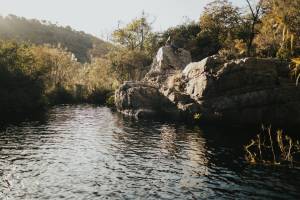
5 Refreshing Swimming Spots in and Around Johannesburg
Johannesburg may be landlocked, but that doesn’t mean you can’t enjoy a day of clear...
 20 November 2025
20 November 2025 
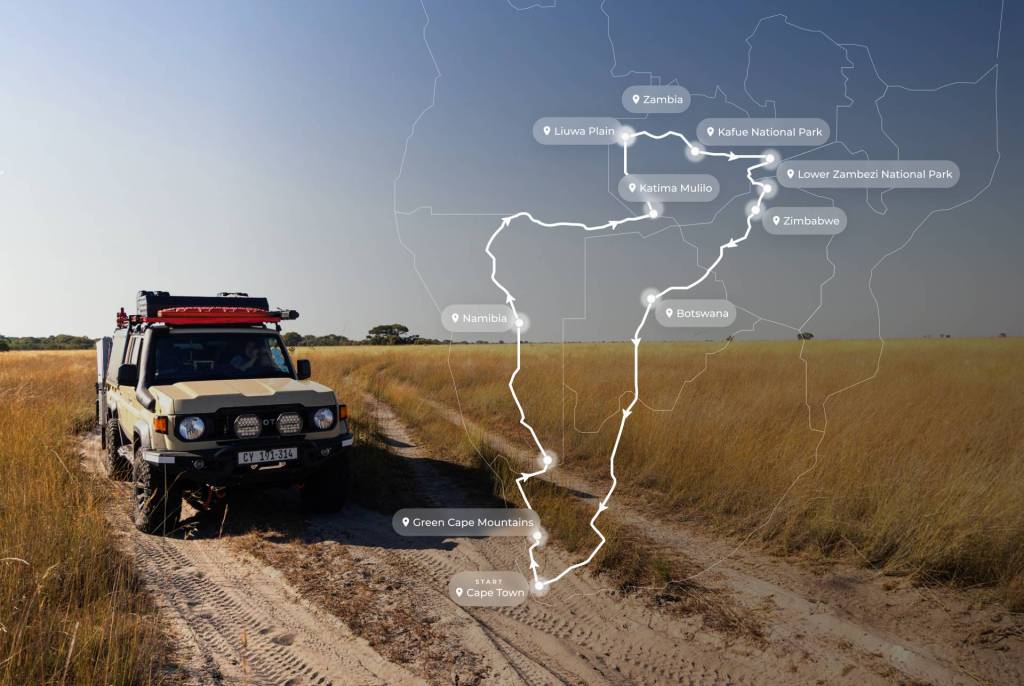
A family’s journey across southern Africa, where dust, distance, and wilderness brought them closer.
Ever wondered what it would be like to take on a family road trip from Cape Town to Zambia? Steve, his wife, and two kids took on this adventure of a lifetime, travelling 7,700 km over four weeks.
This is their story.
There’s a moment before a trip like this when the weight of it hits you. Bags packed. Car loaded. Four weeks away from home. Thousands of kilometres ahead.
This wasn’t our first self-drive safari – my daughters have grown up doing these kinds of trips. But still, setting off from Cape Town with the road pulling us north, I couldn’t help but wonder: what will we find? Will it be too much? Too long? Or just enough?
The first days carried us through the green Cape mountains into the dry heat of Namibia. Each border felt like a small milestone – South Africa into Namibia, and from the northern part of Katima Mulilo in Namibia into Zambia. Then the real adventure began.
Our first destination was Liuwa Plain. A place so vast, so flat, it almost tricks your senses.
Liuwa Plain, situated in the western part of Zambia, is hard to describe unless you’ve stood there. Imagine grasslands stretching until the horizon disappears, no hills, no rises, no trees except the occasional “island” of them.
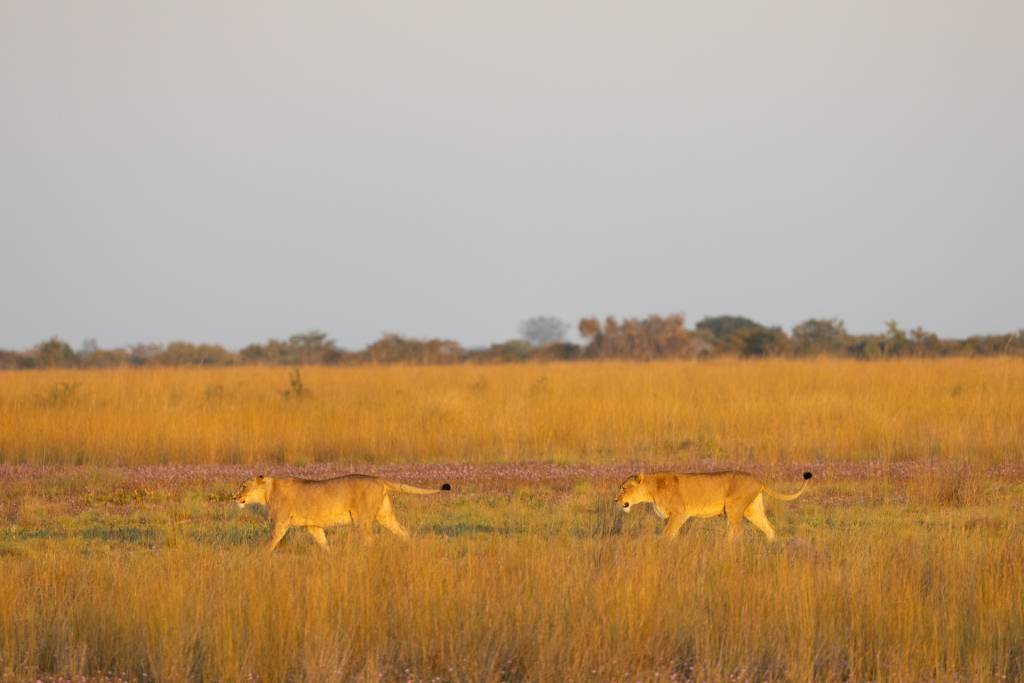
Lions in Liuwa Plains | Photo credits: Steve Conradie
In the dry season, it’s a sea of golden grass, shimmering in the wind. When it rains, the plain floods and becomes a shallow inland lake, an ancient rhythm that has shaped people, animals, and culture for generations.
Only when you stand in the middle of it do you begin to grasp its scale. False Bay, nearly 30 km wide and the largest true bay in South Africa, could fit into a single section – and you’d still be surrounded by horizon. This kind of immensity humbles you.
For us, Liuwa was the reminder right at the start: Africa is not something you look at. It’s something you step into.
The trip quickly found its rhythm. We drove almost every day, spending around six to eight hours behind the wheel. Some days on tar, smooth and fast; others on gravel that rattled every bolt in the car. And then stretches of thick sand where 15 km an hour was the limit.
It sounds gruelling, and some days it was, but there’s also something therapeutic about the drive. The hum of the tyres, the steady forward motion, and the way the landscape slowly shifts… Driving can become a kind of meditation.
The girls handled it beautifully. Maybe because they’ve been doing this since before they could walk (our eldest was three months old when we took her on her first self-drive). They know the rhythm: snacks, games, long silences, bursts of laughter. Of course, there were small arguments in the back seat, but never the dreaded “are we there yet?”
Instead, the car became its own little world. And somehow, the miles and the dust seemed to bind us closer.
From Liuwa we drove east into Kafue and then south towards Lower Zambezi.
I’ve always loved Mana Pools on the Zimbabwean side – it’s a place of beauty I return to often. But crossing to the Zambian side, I wasn’t prepared for how it would feel.
The park doesn’t begin at the gate. It begins 70 km earlier. The road slows, the bush thickens, and suddenly you’re already in it – wildlife moving through trees, birds flashing across the track, and the hum of the river close but unseen.
We camped right on the banks of the Zambezi River. Elephants grazed quietly around us, near enough to hear them breathe.
At night, the fire crackled and the river lapped at our feet. Mornings began with a chorus of birds – seven species were counted in the first few minutes without even trying.
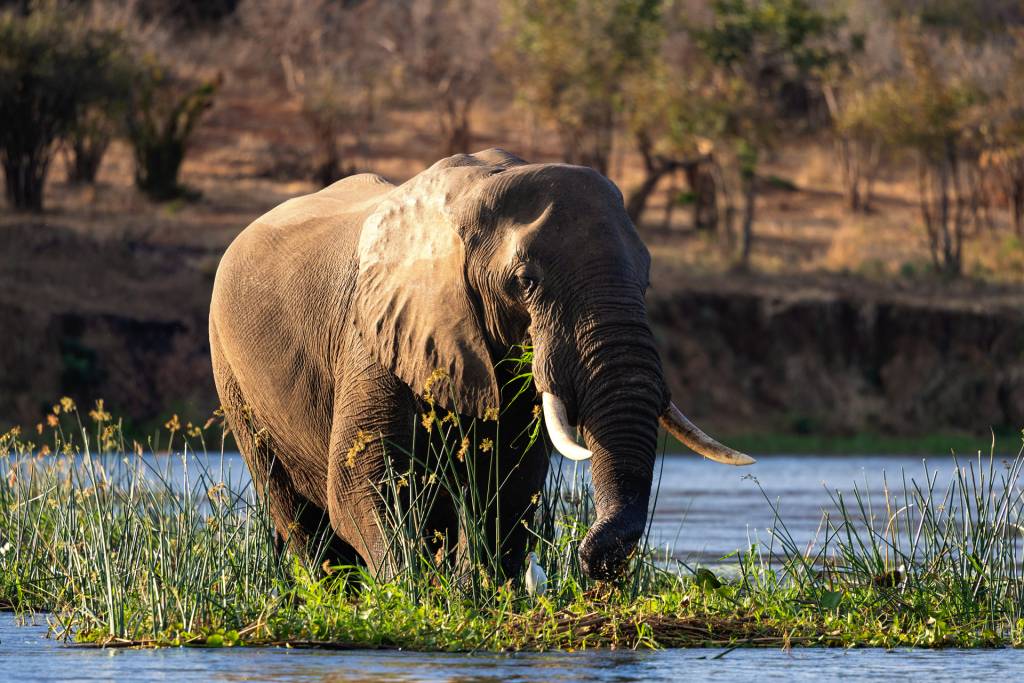
Elephant in Lower Zambezi | Photo credits: Steve Conradie
And there was space. Real space. Hours passed without seeing another vehicle, not just in remote corners, but during regular drives. That solitude gave the place weight.
One day we stopped for lunch beside the river. Chairs out, awning open, food on the table. Nobody else around. Just us, the Zambezi River winding past, and birds weaving through the reeds. It wasn’t dramatic – no lion kill or rare sighting. But it was one of those moments that etches itself into memory.
The more time we spent there, the more it struck me: borders don’t matter. Zimbabwe, Zambia – the wild doesn’t care. The river runs through both. Animals cross as they please. The wilderness is continuous.
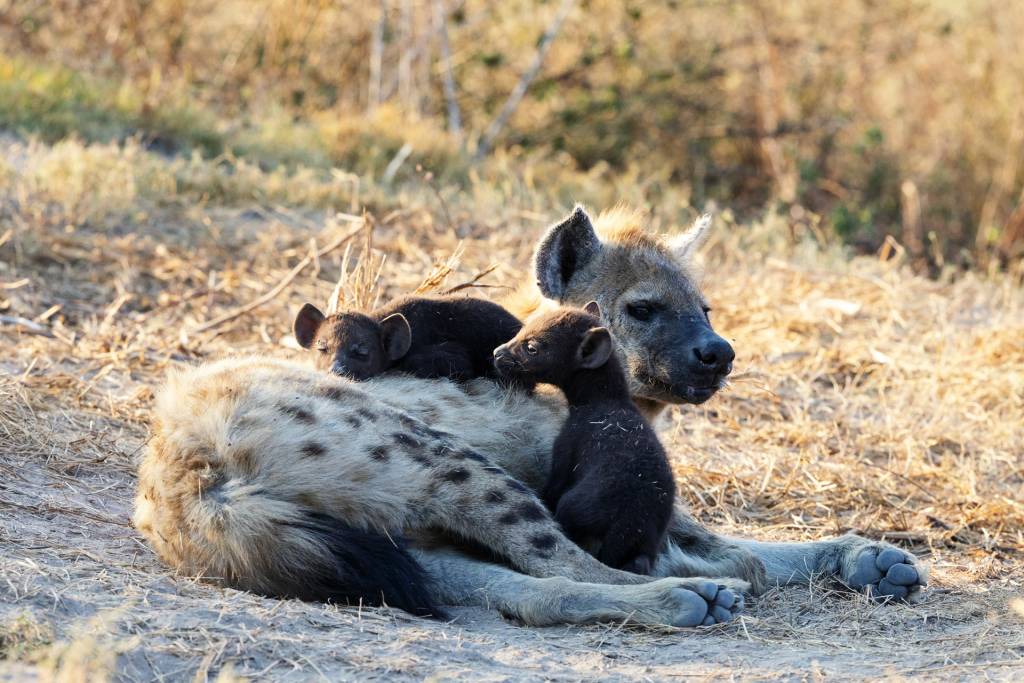
Hyena family in Lower Zambezi | Photo credits: Steve Conradie
Lower Zambezi held us in a way we didn’t expect. For all its simplicity, it might be the part of the trip we’ll carry the longest.
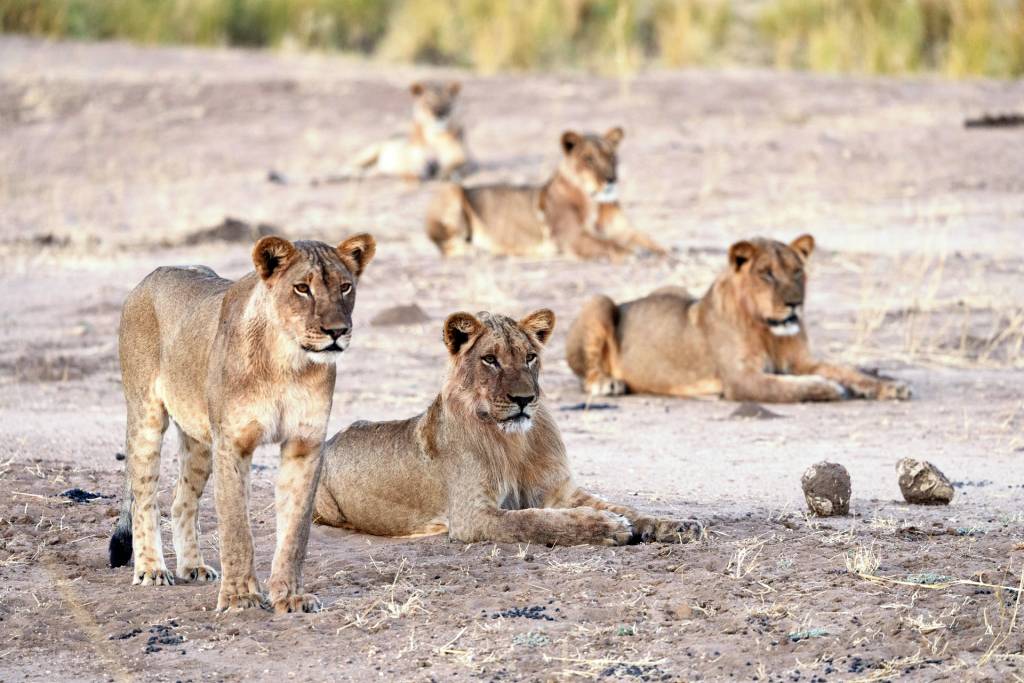
Lions in Lower Zambezi | Photo credits: Steve Conradie
Ask the girls what they’ll remember, and you won’t hear much about lions or leopards. They talk about driving.
On quiet tracks, I’d let them take the wheel. Our youngest sat on my lap, too small for the pedals but wide-eyed with concentration. Our eldest drove herself, laughing when she clipped a bush and straightened out again. For them, it wasn’t about watching; it was about doing.
They also talk about people. At the few lodges we visited, guides made a big impression. They remembered them by name, even more than the wildlife. It reminded me: children experience safaris differently. For them, the experience is less about the checklist and more about relationships and small human moments.
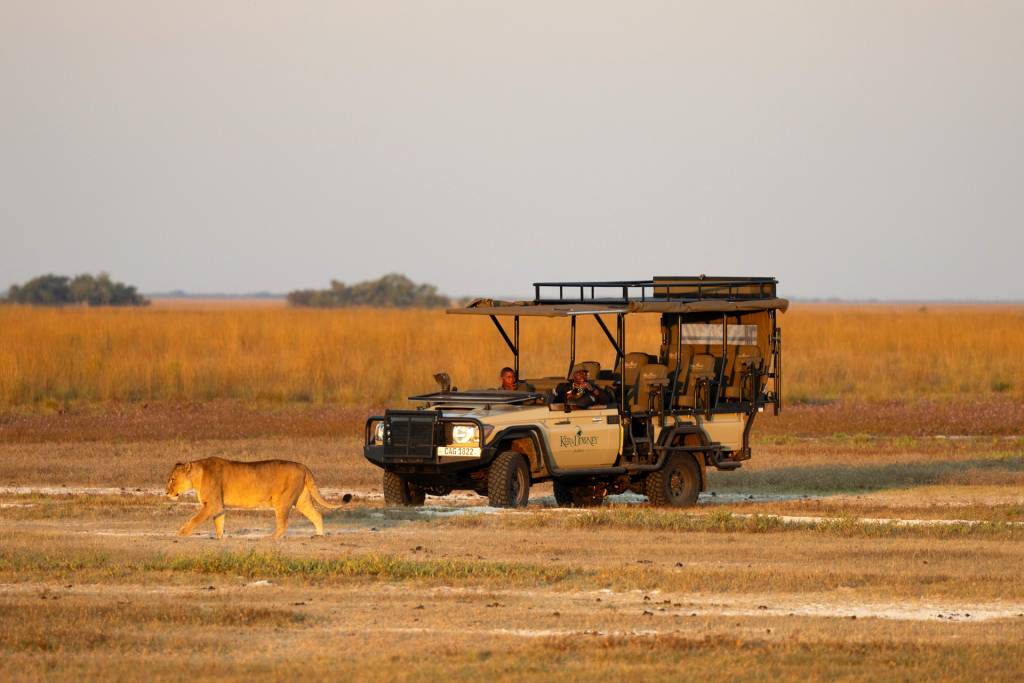
Lion sighting | Photo credits: Steve Conradie
Not everything was easy. Zambia’s tsetse flies were relentless, especially for one of the girls. A definite low point. But even that became part of the story – the grit that makes the gift more real.
We mixed camping with a few lodge stays. Both are wonderful, but for me personally, camping is where I’m at my best.
At a campsite, Africa is right under your feet. You wash dishes in a basin under the stars. You fall asleep to the sounds of the bush, not muted through walls but alive all around you. At night, you don’t step outside alone; you go together, scanning the dark for eyes. It’s immersive, humbling, and unforgettable.
Lodges are beautiful; it’s where Africa’s raw edges are softened, which my wife loves – they provide the chance for a real shower, a proper bed, and a break from chores. It’s the compromise of family travel. But for me, the magic lives outside the walls.
Looking back, the biggest gift wasn’t a place, a campsite, or even a sighting. It was what happened between us as a family.
We disconnected. The girls weren’t allowed Wi-Fi, even when it was available. At first, there was pushback. Restless energy. But slowly, something shifted.
Conversations stretched longer. We laughed more. Silences felt easy, not awkward. Evenings became stories around the fire. Mornings meant quiet togetherness before the day’s drive.
In today’s world – with screens, pings, and constant noise – that felt radical and restorative.
I call the wilderness my fix, my medicine. And on this trip, I saw it work not just for me, but for all of us.
If I had to describe this trip as a chapter in our family’s story, it would be this: the chapter where we turned the Wi-Fi off and the family on.
It wasn’t glamorous. It wasn’t perfect. There were tired days and bug bites. But there were also nights by the Zambezi River with elephants grazing beside us, moments of silence that felt sacred, and laughter that carried for miles.
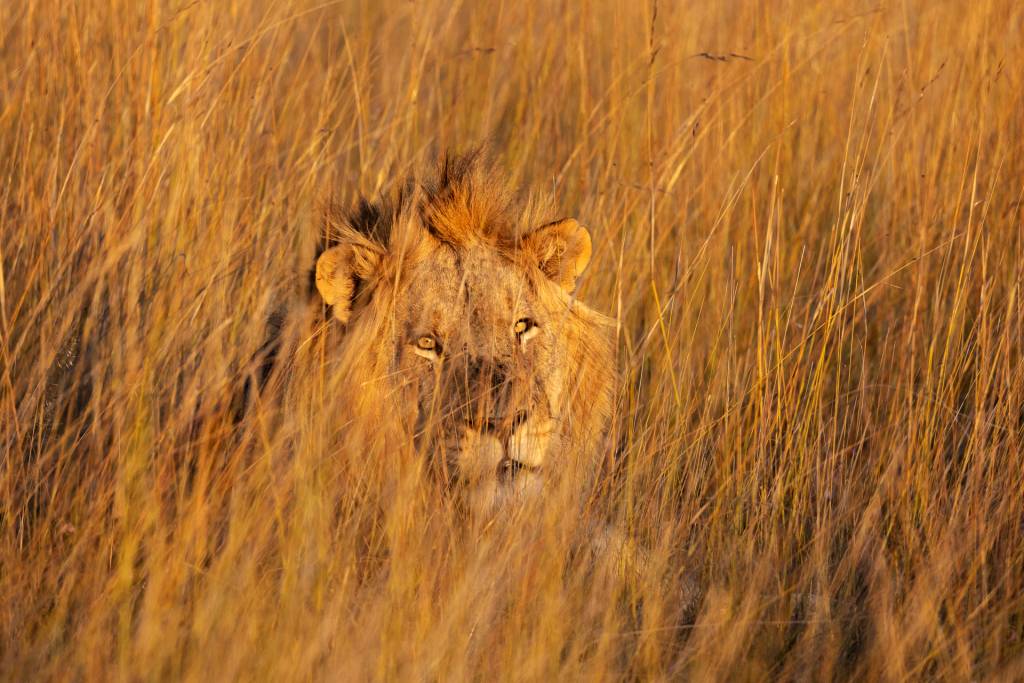
Lion portrait through the grasslands | Photo credits: Steve Conradie
More than a holiday, it was a recalibration. A reminder that Africa still offers places where the wild is whole, where families can reconnect, and where you rediscover each other away from everything else.
That’s what will stay with us. Long after the dust has settled, the memory remains: 7,700 km, four countries, countless moments – and the wilderness as our medicine.
Feeling inspired to hit the open road? There’s no better way to experience Africa’s wild beauty than from behind the wheel. Start planning your self-drive adventure with Drive South Africa and turn your dream journey into the road trip of a lifetime.